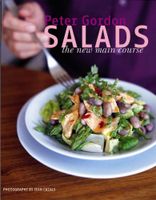Advertisement
Israeli Couscous, Hijiki, Red Onion, Tomato and Parsley Salad
with Spicy Fried Tofu and Minted Aubergine Salad

Preparation info
- Difficulty
Medium
Appears in
By Peter Gordon
Published 2005
Israeli couscous is actually a type of ‘pasta’ made from wheat. The key to making it delicious is toasting it before cooking in the same way that you cook risotto, by the absorption method. If you’re making this for a large number of people, you may prefer to toast the couscous in the oven.
Hijiki is just one of the fabulous family of edible seaweed – it is jet-black and comes in dried form from Japanese and health food shops. If you can’t locate any, try arame – another more readil


